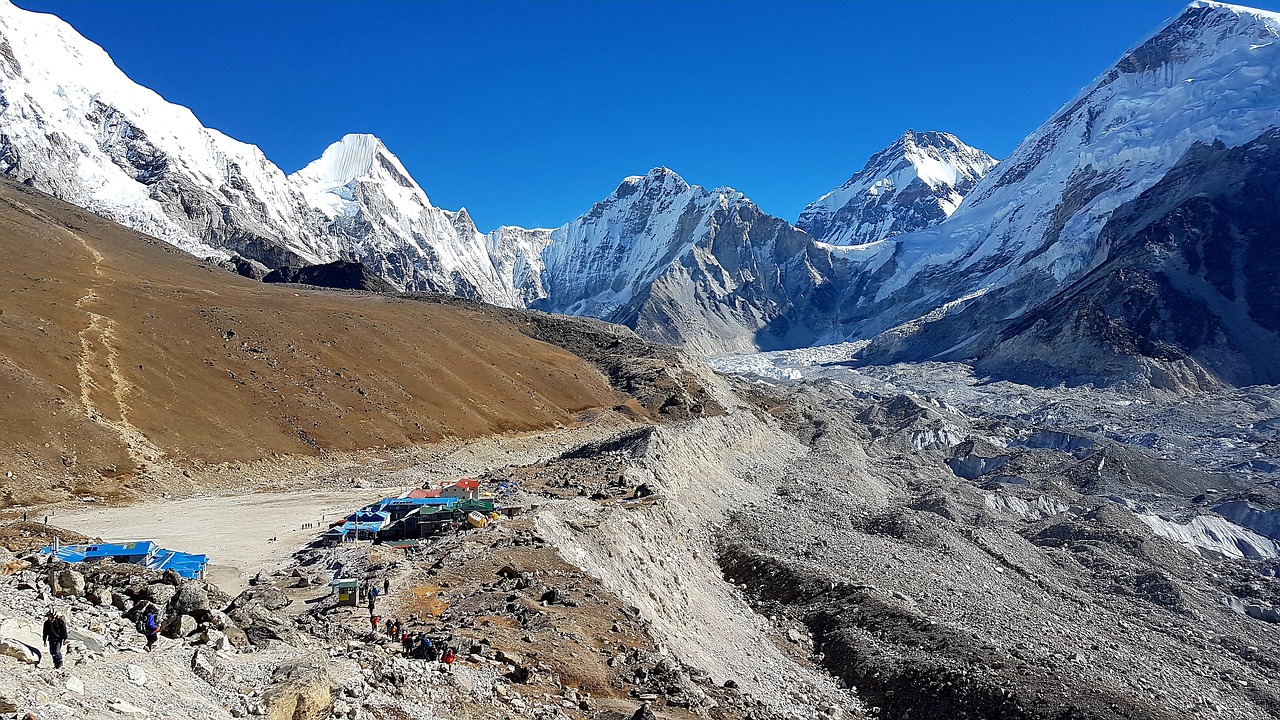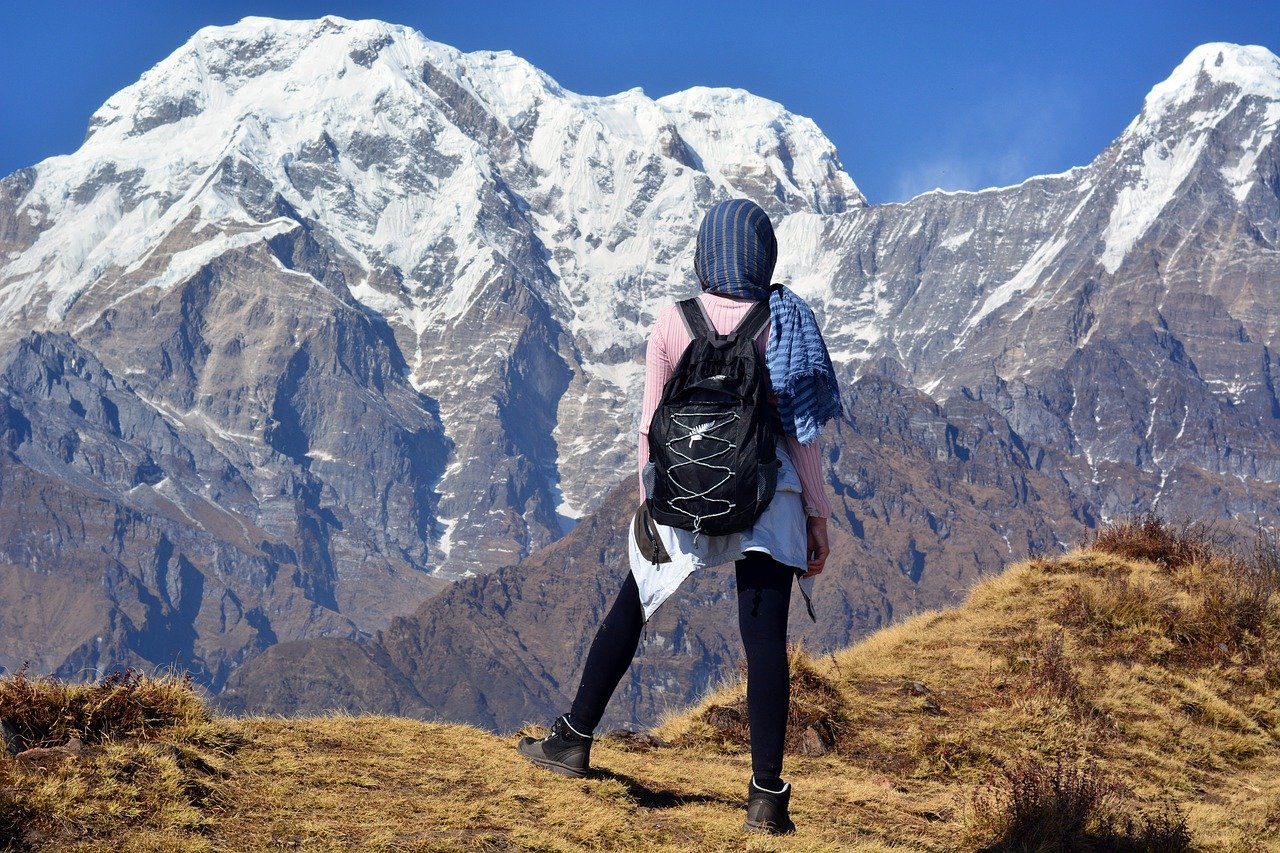A Complete Guide to Everest Base Camp Trekking
Everest Base Camp Trek: The Ultimate Guide
Embarking on the Everest Base Camp (EBC) trek is a dream come true for many trekking enthusiasts. Nestled in the majestic Himalayas, thousands of adventurers flock here annually to experience the thrill and beauty of this iconic destination.
Why Everest Base Camp is a Must-Visit
Everest Base Camp is one of the most sought-after trekking destinations globally. With its mesmerizing mountain views, excellent trekking facilities, and warm, hospitable locals, it offers an unforgettable experience.
Highlights of the Everest Base Camp Trek
- Proximity to Mt. Everest: Witness the tallest mountain in the world up close, along with other towering peaks like Mt. Lhotse, Cho Oyu, and Makalu.
- Sherpa Culture: Immerse yourself in the rich culture of the Sherpa people by visiting various monasteries and villages.
- Sagarmatha National Park: Explore this UNESCO World Heritage Site and its diverse flora and fauna.
- Khumbu Glacier: Enjoy the breathtaking view of one of the largest glaciers in the region.
- Scenic Forests: Trek through enchanting rhododendron and pine forests.
Understanding the Weather at Everest Base Camp
Everest Base Camp lies in a high-altitude, mountainous region, where weather conditions can vary dramatically.
Seasonal Weather Patterns
Summer (June to August)
- Temperature: Min temperature around 0°C at higher points.
- Characteristics: Monsoon season coincides with summer, making it less popular due to heavy rains. However, with proper gear, it can still be a pleasant experience.
Winter (December to February)
- Temperature: Can drop to -20°C.
- Characteristics: Stunning views with minimal rainfall, but heavy snowfall can close some routes. Ideal for those who prefer solitude.
Autumn (September to November)
- Temperature: Mild and moderate.
- Characteristics: Popular season with stable weather, clear skies, and comfortable temperatures for trekking.
Spring (March to May)
- Temperature: Pleasant with lush vegetation.
- Characteristics: Best time for photography with blooming rhododendrons and vibrant landscapes.
Altitude Considerations on the EBC Trek
Trekking to Everest Base Camp involves significant altitude gains. The journey starts from Lukla (2,800 meters) and reaches up to 5,364 meters at the Base Camp.
Key Altitudes and Stops
- Lukla: 2,800 meters
- Namche Bazaar: 3,438 meters
- Tengboche: 3,860 meters
- Gorak Shep: 5,164 meters
- Kala Patthar: 5,545 meters
Acclimatization is crucial to prevent altitude sickness, and different trekking packages offer various stops and durations to suit individual needs.
Assessing the Difficulty of the EBC Trek
The Everest Base Camp trek is moderately difficult. Factors influencing the trek’s difficulty include altitude, daily trekking hours, and the season.
Daily Trekking Routine
- Trekking Hours: Approximately 5-6 hours per day.
- Routine: Breakfast in a teahouse, morning trek, lunch break, afternoon trek, and overnight stay.
Preparing for Altitude
- Acclimatization: Essential to spend time at high altitudes to adjust.
- Preparation: Physical fitness and slow, steady trekking help mitigate altitude sickness.
Costs Associated with Trekking to Everest Base Camp
The cost of the EBC trek includes various components like flights, accommodation, food, gear, permits, insurance, and guide services.
Estimated Costs
- Flight (Kathmandu to Lukla): ~$177 each way
- Permits: Sagarmatha National Park ($33) and TIMS card (varies by nationality)
- Guides and Porters: $20-$40 per day
- Accommodation and Food: Ranges from budget teahouses to luxury lodges
Importance of Travel Insurance for EBC
Travel insurance is crucial for the EBC trek. It covers potential risks like altitude sickness, accidents, illness, and lost belongings.
Coverage Essentials
- Helicopter Rescue: Can cost up to $5,000 without insurance.
- Medical Expenses: Including altitude sickness treatment.
- Lost Items: Coverage for personal belongings.
Dealing with Altitude Sickness on the EBC Trek
Altitude sickness is a common concern for trekkers at elevations above 3,000 meters.
Types of Altitude Sickness
- Acute Mountain Sickness (AMS): Mild symptoms like headaches and nausea.
- High Altitude Pulmonary Edema (HAPE): Severe condition with fluid buildup in the lungs.
- High Altitude Cerebral Edema (HACE): Severe condition with fluid buildup in the brain.
Prevention and Management
- Acclimatization: Spend extra days at higher altitudes.
- Hydration and Nutrition: Stay well-hydrated and eat nutritious food.
- Medication: Carry appropriate medicines and consult a doctor before the trek.
Hiring a Guide and Porter for EBC
Hiring a guide and porter can enhance your trekking experience by providing local knowledge and carrying your gear.
Benefits of Hiring a Guide
- Local Insight: Understand the culture and lifestyle of the region.
- Navigation: Guides help you navigate the best trekking routes.
- Support: Physical and mental support during the trek.
Hiring Options
- Guide: Licensed professionals who offer detailed knowledge and safety.
- Porter: Carry your belongings, allowing you to trek comfortably.
- Porter-Guide: Combines the roles of both guide and porter.
Choosing a Travel Agency for EBC Trek
Selecting the right travel agency is crucial for a safe and enjoyable trek.
Criteria for Selection
- Registration: Ensure the agency is registered.
- Experience: Look for agencies with a strong track record.
- Reviews: Check online reviews on platforms like TripAdvisor and Lonely Planet.
- Customization: Agencies should offer customizable trek packages.
Everest Base Camp Training Program
Proper training is essential for completing the EBC trek.
Training Regimen
- Cardio Exercises: Running, cycling, and swimming to build endurance.
- Strength Training: Focus on legs and core muscles.
- Diet: A balanced diet rich in proteins, vitamins, and minerals.
Classic Everest Base Camp Trek Route
The classic EBC trek route is a well-established path with a detailed itinerary.
Sample Itinerary
| Day | Itinerary | Max Altitude | Distance Covered | Trekking Hours |
|---|---|---|---|---|
| 1 | Arrival in Kathmandu | 1,400 m | – | – |
| 2 | Kathmandu sightseeing | 1,400 m | – | – |
| 3 | Kathmandu – Lukla – Phakding | 2,800 m | 8 km | 3-4 hrs |
| 4 | Phakding – Namche Bazaar | 3,438 m | 11 km | 5-6 hrs |
| 5 | Namche Bazaar acclimatization | 3,438 m | – | – |
| 6 | Namche Bazaar – Tengboche | 3,870 m | 10 km | 5-6 hrs |
| 7 | Tengboche – Dingboche | 4,360 m | 9 km | 5-6 hrs |
| 8 | Dingboche acclimatization | 4,360 m | – | – |
| 9 | Dingboche – Dughla | 4,600 m | 4 km | 3-4 hrs |
| 10 | Dughla – Lobuche | 4,940 m | 4 km | 2-4 hrs |
| 11 | Lobuche – Gorak Shep – EBC – Gorak Shep | 5,364 m | 13 km | 6-7 hrs |
| 12 | Gorak Shep – Kala Patthar – Pheriche | 5,545 m | 16 km | 7-8 hrs |
| 13 | Pheriche – Namche Bazaar | 3,440 m | 20 km | 6-7 hrs |
| 14 | Namche Bazaar – Lukla | 2,860 m | 19 km | 6-7 hrs |
| 15 | Lukla – Kathmandu | 2,860 m | – | – |
| 16 | Departure from Kathmandu | 1,400 m | – | – |
Other Trekking Options in the Everest Region
For those looking to explore beyond EBC, there are several alternative treks in the Everest region.
Alternative Treks
- Everest Base Camp Panorama Trek: Ideal for beginners, this trek covers lower altitudes and offers stunning views.
- Everest High Passes and Island Peak: A challenging trek crossing Cho La Pass, Kongma La Pass, and climbing Island Peak.
- Gokyo Valley Trek: A scenic trek through the breathtaking Gokyo Valley, including options to extend to Renjo La Pass or EBC.
- Jiri to EBC Trek: A longer trek starting from Jiri, providing ample time for acclimatization.
Helicopter Tours to Everest Base Camp
For those unable or unwilling to trek, a helicopter tour to Everest Base Camp offers a convenient alternative.
Helicopter Tour Highlights
- Quick and Comfortable: Fly from Kathmandu to Lukla and then to EBC and Kala Patthar.
- Stunning Views: Enjoy aerial views of the Himalayas and the base camp.
- Time-Efficient: Ideal for those with limited time.
Cost and Duration
- Cost: Approximately $1,500 per person.
- Duration: 3 to 5 hours, including landing time at Kala Patthar and breakfast at a lodge in Syangboche.




Post Comment